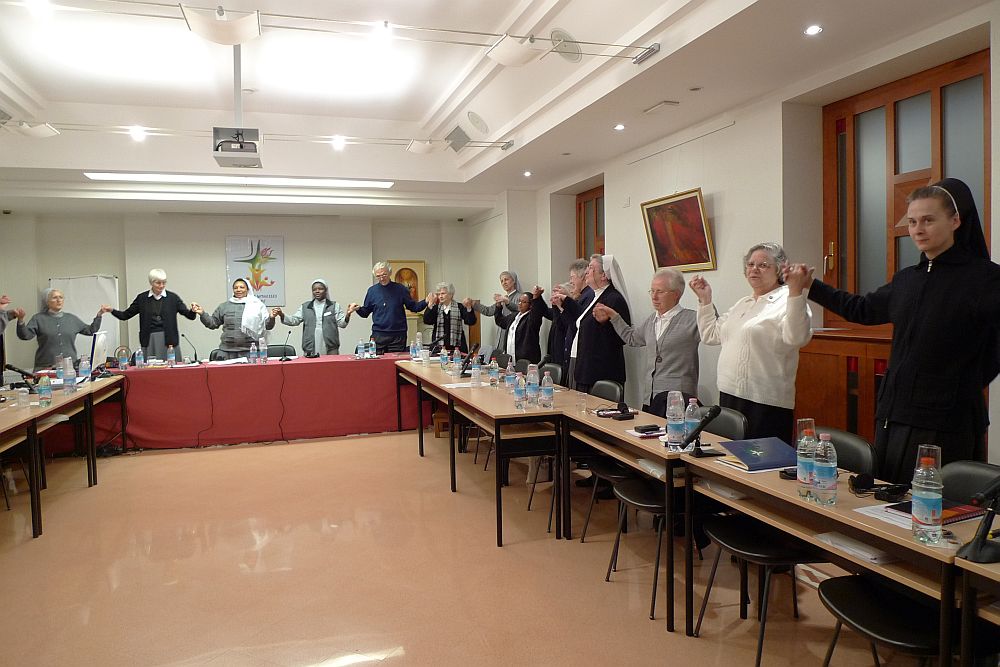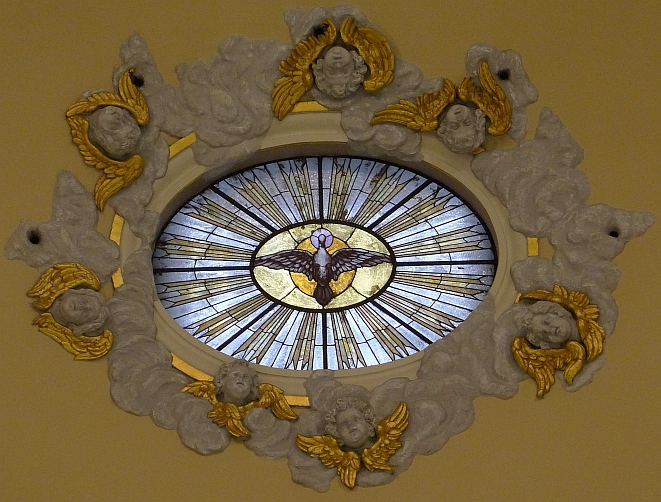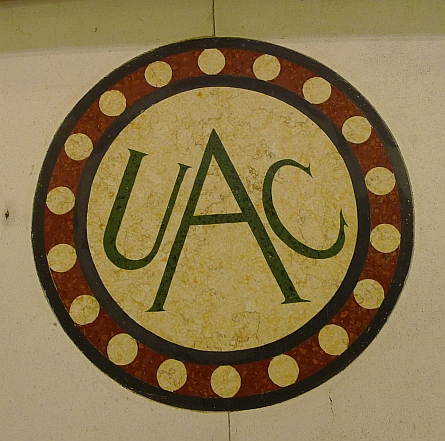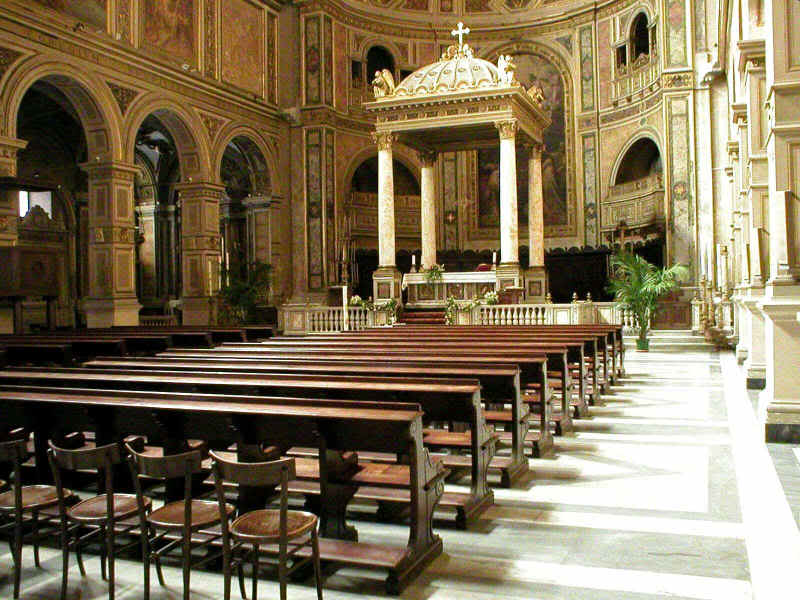
Die Vereinigung des Katholischen Apostolats, das Erbe unseres Gründers, erscheint uns als die kostbare Perle des Evangeliums, die wir mehr entdecken, verinnerlichen und mit anderen teilen wollen.
Der Eckpfeiler unseres Charismas ist die Zusammenarbeit.
(Aus der Botschaft des Generalkapitels 2010)
Die Vereinigung des Katholischen Apostolates, eine Gabe des Heiligen Geistes, ist eine Gemeinschaft von Gläubigen, die, mit Gott und untereinander verbunden, gemäß dem Charisma des heiligen Vinzenz Pallotti die Mitverantwortung aller Getauften fördern, um den Glauben zu beleben und die Liebe in Kirche und Welt zu entzünden, und so alle zur Einheit in Christus zu führen. (Generalstatut der UAC, 1)
Die Vereinigung des Katholischen Apostolates heute
aus einem Vortrag von P. Derry Murphy SAC an die 2010 zum Genralkapitel in Rom versammelten Pallottinerinnen.
1. The Catholic Church erected the Union of Catholic Apostolate as a Public International Association of the Faithful of Pontifical Right through a decree signed October 28th 2003, the erection was constituted by the Pontifical Council for the Laity, a discastery of the Curia of the Church. With the same decree the Holy See approved the General Statutes of the Union on an ‘ad experimentum’ basis for a period of five years. This erection of the Union as a Public Association of the Catholic Church was confirmed or ratified by the decree of definitive approval of the General Statutes on October 28th 2008. This means that the Union of Catholic Apostolate is a Public Association of the Faithful of the Catholic Church, it was erected by the Holy See, and as a juridic person it is perpetual, it can be suppressed only by the competent authority which erected it, i.e. the Holy See, and will continue to exist according to the provisions of canon 120 of the Code of Canon Law, for 100 years after the last member has ceased to act; it also survives “if even one of the members of the collegial juridical person survives”.
Perhaps one of the greatest challenges in these seven or eight years has been that of recognizing and realising the significance of this erection. It may seem to us to be something simple, or of little importance, however when understood in the context of the life of the Catholic Church the erection is the highest recognition that an association of the faithful may receive.
The erection of the Union and the definitive recognition of its General Statutes is an authoritative confirmation of the validity of the charism which St. Vincent Pallotti received through the action of the Holy Spirit, on January 9th 1835. During the consignment of the decree of erection in October 2003, the President of the Pontifical Council for the Laity, Archbishop Stanisław Ryłko, said that the Holy See, through the Pontifical Council for the Laity, had given the foundation of Vincent Pallotti the configuration, or the institutional form, that was most fitting or suitable, so that it may realize its mission in the world, the mission for which the Holy Spirit entrusted him with the charism.

This recognition is the fruit of a long process of discernment on the part of the Pallottine family in the first place and then, later, on the part of the Holy See. It is worth noting that while the process may seem to us to have been a long and protracted one, it was relatively short and quick once we, the Pallottine Family, had discerned what we felt the charism is and how it can be concretized in our times. For us, members of the Pallottine Family, the latest phase in the history of the Union goes back to the time immediately following the Second Vatican Council and its call to all religious families to “return to the origins and the uniqueness of its identity and charism” and which stressed that “the spirit and aims of each founder should be faithfully accepted and retained, as indeed should each institute’s sound traditions, for all of these constitute the patrimony of an institute” (Perfectae Caritatis, n. 2). For a brief historical overview of the period from this time of renewal up to 2003 I refer you to an appendix. However, the process immediately preceding the erection of the UAC can be summarized as:
(a) The decision taken in 1998 to request that the Holy See recognize the Union of Catholic Apostolate.
(b) The presentation, in 1999, of the General Statutes ‘ad experimentum’ to the Pontifical Council for the Laity for its approval; the request for an explicit confirmation of the public juridic personality of the Union in the Diocese of Rome, and the request for the erection of the Union as a Public International Association of the Faithful.
(c) UAC Project 2000.
(d) The definitive erection of the Union as a Public International Association of the Faithful by a decree dated October 28th 2003, the approval of its General Statutes ‘ad experimentum’, and the confirmation of the definitive erection and the definitive approval of the General Statutes with a decree dated October 28th 2008.

So from this you can see that the initial stage of discernment was somewhat protracted, however once the discernment had been made the final stage was relatively short.
The General Statutes were approved ‘ad experimentum’ in 2003; they were implemented, evaluated, discussed, modified and presented to the PCL for definitive approval. The PCL studied the revised text of the Statutes and indeed requested very few corrections and modifications, in fact they were only four in all and very minor points.
Therefore the UAC is living a time of profound thanksgiving and joy. This is the first point I wish to make. It is truly right and fitting to give thanks to God. I am sure that St. Vincent would have intoned a ‘Te Deum’ for this erection and recognition. We can imagine the joy of St. Vincent now that the Church has fully and officially recognized his vision and made it her own.
Mons. Ryłko said at the Mass of thanksgiving for the erection of the Union, celebrated in San Lorenzo in Damaso where St. Vincent was baptised:

San Lorenzo in Damaso
“How can we not thank the Holy Spirit for this “evangelical pearl” that has been given gratuitously to you! How can we not marvel at its strength which continues to unite in one true spiritual family, men and women of different states of life, vocations, ages, cultures and places of origin, and who find nourishment for their lives of faith in this gift which is common to them all”.


